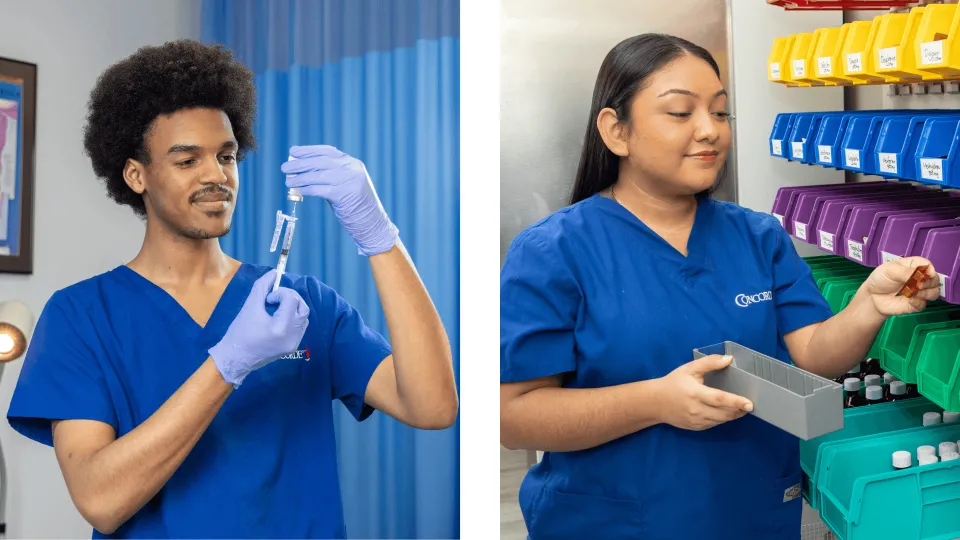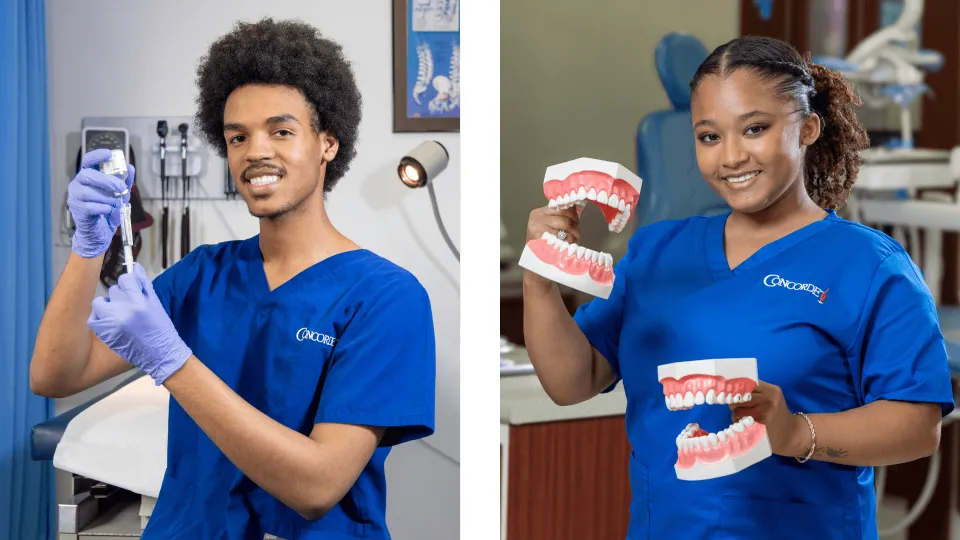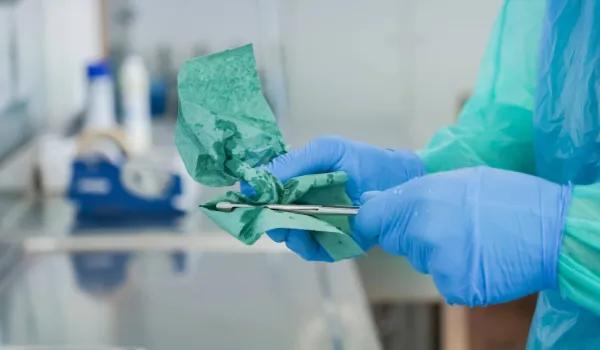
The medical assistant plays a vital role in healthcare by supporting patients and medical teams. This in-demand profession combines administrative and clinical duties, encompassing various responsibilities. Medical assistants perform various tasks, including taking patient vital signs and scheduling upcoming appointments. This field anticipates 15% growth, with about 118,000 openings projected from 2023 to 2033.
Medical Assistant Duties
Specific duties will vary by specialty, location, and employer. The primary task of a medical assistant is to take and record a patient's personal information, including medical history. Additional tasks will vary by state and employer but can include sterilizing medical equipment, disposing of contaminated supplies, performing basic laboratory testing, drawing blood, and instructing patients about medications. Typical duties of a medical assistant include the following:
- Taking and recording patient personal information and medical history
- Measuring patient vital signs, such as temperature, weight, and blood pressure
- Assisting physicians during medical examinations
- Scheduling future patient appointments
- Collecting and preparing blood samples or other specimens for lab testing
- Recording patient information, such as test results and vital signs, as part of the patient's medical records
- Maintaining office and medical supply inventories
If permitted by law, medical assistants can also give patients medications or injections under the direction of a physician.
Administrative Duties

Medical assistants may perform a variety of administrative duties, from answering the phone and scheduling appointments to recording and maintaining medical records. They can also assist patients in understanding their insurance coverage by helping them complete forms, providing coding information, and contacting insurance companies regarding billing. Medical assistants are also responsible for office maintenance and medical supplies, including ordering and restocking. Administrative duties for a medical assistant include:
Front Desk & Patient Interaction
- Answering phones
- Scheduling and monitoring patient appointments
- Identifying patients at check-in
- Delivering appropriate customer service, such as follow-up phone calls with patients after procedures, confirmation of upcoming appointments, and efforts to collect on current and past due accounts
Insurance Verification & Billing Administration
- Verifying insurance coverage or financial eligibility based on the patient's insurance plan
- Verifying procedural and diagnostic codes
- Acquiring and verifying pre-certifications and prior authorizations from the patient's insurance company
- Providing claims, documentation, and billing requests using accurate and up-to-date coding guidelines
- Ensuring document compliance with insurance and government requirements
- Entering and verifying charges, making necessary adjustments, reconciling charges, and various accounts receivable tasks
- Processing billing statements through insurance companies, third-party payers, and patients
- Resolving billing issues with third-party payers and insurance companies, including appeals and denials
Medical Records & Care Coordination
- Maintaining proper medical records on paper and in electronic databases
- Assisting with referrals for special procedures or exams with other healthcare providers
Administrative Support & Data Management
- Entering patient information into various spreadsheets or databases, such as Excel, electronic health records, electronic medical records, billing modules, and scheduling systems specific to the employer
- Reporting safety concerns and participating in safety evaluations
- Maintaining the office's administrative and medical supplies
Concorde Career College's Medical Assistant Diploma program can provide the opportunity to learn the knowledge and skills necessary for success. Students learn telephone etiquette, filing systems, scheduling software, chart review, records management, auditing methods, data entry, government regulations, and legal requirements.
- Telephone etiquette: Answer calls quickly and maintain a polite demeanor, especially with unhappy customers.
- Filing systems: Learn how files are named, where they are placed, and how to store and retrieve files.
- Scheduling software: Work with programs designed to help medical assistants maintain bookings and appointments, including desktop and web-based programs.
- Scheduling duration: Medical assistants match the visit length to the type of exam, procedure, or treatment and how booked the physician is.
- Triage: Learn to recognize the urgency related to appointment needs and schedule accordingly.
- Chart review: Review patient vital signs, diagnoses, medications, and treatments.
- Records management: Create, maintain, and destroy medical records using various software and systems.
- Auditing methods: Evaluate and improve patient outcomes.
- Data entry: Input important patient information related to the visit, including vital signs, diagnosis, and treatment.
- Government regulations and legal requirements: Be familiar with state regulations and laws related to maintaining, storing, and disposing of medical records.
- HIPAA: Federal law protects confidential patient information and medical records.
- Privacy Act of 1974: This provides patients the right to access their medical records and request amendments when necessary.
Clinical Duties
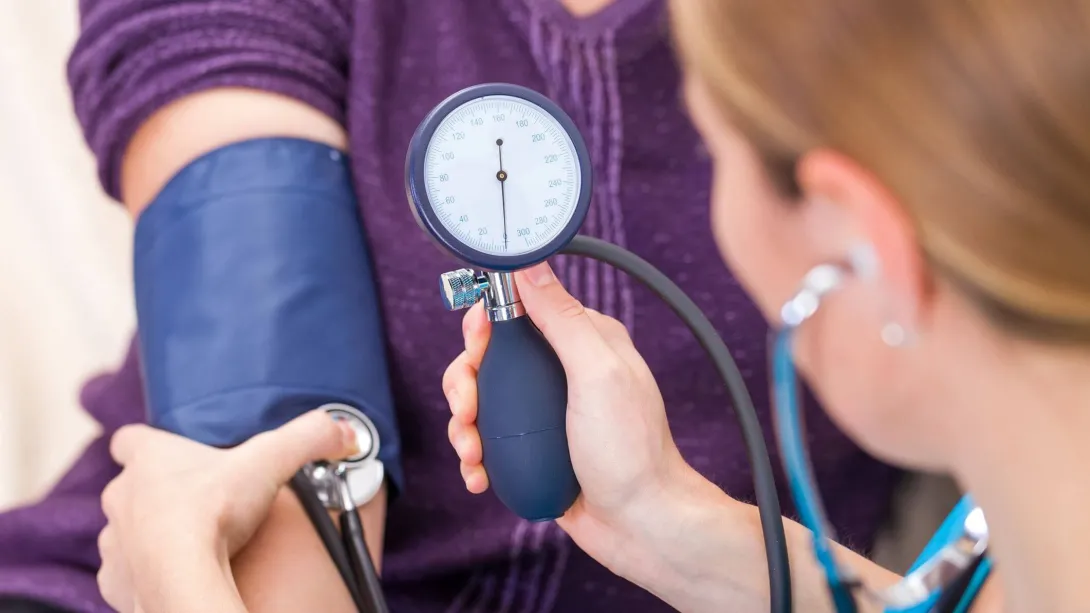
Medical assistants work under the direction of physicians to assist with specific tasks regarding patient care. Clinical duties of a medical assistant include working in direct contact with patients. The clinical responsibilities of a medical assistant will vary by employer and state but can include the following:
- Taking patient vital signs: Measure and record patient temperature, weight, height, blood pressure, respiratory rate, blood oxygen levels, and blood pressure.
- Recording information: Record patient symptoms and medical history.
- Preparing the exam room: Clean and restock the examination room between patients.
- Assisting with patient exams: Medical assistants may help the physician during procedures such as a physical exam by handing them instruments, recording relevant information, or performing tasks such as suture removal or medication application.
- Diagnostic testing: Perform X-rays and EKGs to assist with patient diagnosis.
- Recording changes: Take measurements or photographs to track changes in patient conditions over time.
- Administering medications: Give injections or medications to patients under the supervision of a physician.
- Collecting samples: Draw blood and collect tissue samples, urine, stool, or other specimens from a patient for lab testing.
- Caring for wounds: Change the dressing on a wound or remove stitches as directed by the physician.
- Applying ointments or creams: Administer antibacterial creams, pain relievers, and lotions.
- Caring for instruments: Dispose of contaminated supplies, and clean and sterilize medical instruments used in procedures.
Medical assistants may also explain medical procedures, lab results, and potential treatment options to patients. They can also submit requests for patient refills, discuss prescriptions with patients, and instruct patients about how to take medications.
Skills and Qualifications
Although certification is not mandatory for medical assistants in most states, many employers prefer certified candidates. Certification can showcase a medical assistant's knowledge and skills and ensure they are equipped to provide safe and effective patient care. The three primary certifications for medical assistants are:
- Registered Medical Assistant: Offered through American Medical Technologists with the requirement of 720 hours of clinical training or three years of work experience as a medical assistant and passing a 230-question exam.
- Certified Medical Assistant: Provided by the American Association of Medical Assistants. Applicants need to complete an accredited educational program and achieve a passing score on a 200-question exam.
- National Certified Medical Assistant: Offered by the National Center for Competency Testing, this certification requires a high school diploma or equivalent, graduation from an accredited training program or two years of full-time work experience in a healthcare setting, and a passing score on a 150-question exam.
Related: RMA vs. CMA: Comparing Medical Assistant Certifications
Essential skills and qualifications for a medical assistant include the following:
- Organizational skills
- Customer service
- Attention to detail
- Ability to learn new skills quickly
- Stress management
- Basic clerical or office skills
- Knowledge of, or ability to learn, EHR software
- Basic understanding of medical terminology
Interested in training to become a medical assistant? Schedule a Tour at Concorde Today
Work Environment
Medical assistants can work in a variety of healthcare settings, including hospitals, outpatient clinics, and private practices. Most are full-time positions and include some evenings, weekends, and holidays because healthcare facilities are open 24/7. According to the U.S. Bureau of Labor Statistics, 56% of medical assistants work in physician offices, with 15% at hospitals (private, local, state), 9% at outpatient care centers, and 8% at other healthcare practitioner offices.
Medical assistants can work in specific areas of medicine or specialties, such as:
- Cardiology
- Pediatrics
- Endocrinology
- Obstetrics and gynecology
- Dermatology
- Geriatrics
- Podiatry
- Anesthesiology
- Oncology
- Phlebotomy
- Neurology
- Ophthalmology
- Orthopedics
- Chiropractic
- Emergency medicine
- Family medicine
With various specializations available in the field, individuals need to explore their options and find the path that best aligns with their interests, skills, and career goals.
Career Outlook and Advancement
As the U.S. population ages, the demand for quality healthcare is increasing. Consequently, medical assistants are, and will continue to be, in high demand to address these healthcare needs. Medical assistants play a crucial role in the daily operations of healthcare facilities, handling both clinical and administrative tasks. In addition to superb job security, medical assistants typically benefit from a good work-life balance.
There are usually around 119,800 job openings for medical assistants in the United States each year. That's a projected growth of 15%, higher than average for other positions. Retirements, career changes, and the growing demand for medical assistants nationwide drive this strong job outlook.
More employers, approximately 88%, require or encourage certification for medical assistants. Concorde offers a Medical Assistant Diploma program that can be completed in as little as nine months or an Associate of Applied Science (Memphis and Southaven campuses only) in just eight months for those who already have their Medical Assistant diploma, potentially increasing the employability and marketability of its graduates.
Conclusion
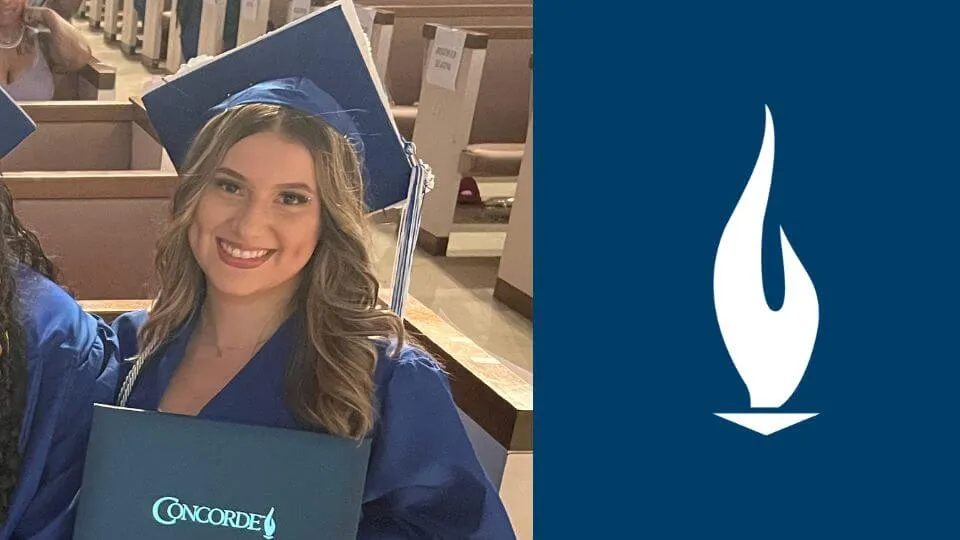
Medical assistants handle various duties, encompassing clinical and administrative tasks, and the job outlook for this profession is promising. Medical assistants play a crucial role in delivering quality healthcare services nationwide. They work in various settings, including physician's offices, hospitals, specialty clinics, and other healthcare facilities, handling various administrative and clinical tasks. Connect with Concorde admissions today for more information on training to become a medical assistant.
U.S. Bureau of Labor Statistics. (2024, August 29). Medical assistants. U.S. Bureau of Labor Statistics. https://www.bls.gov/ooh/healthcare/medical-assistants.htm
Medical assistant job outlook & demand. Stepful. (n.d.). https://www.stepful.com/post/medical-assistant-job-outlook
Take The Next Step Towards a Brighter Future
Interested in learning more about our Medical Assistant program?
We have a Concorde representative ready to talk about what matters most to you. Get answers about start dates, curriculum, financial aid, scholarships and more!

